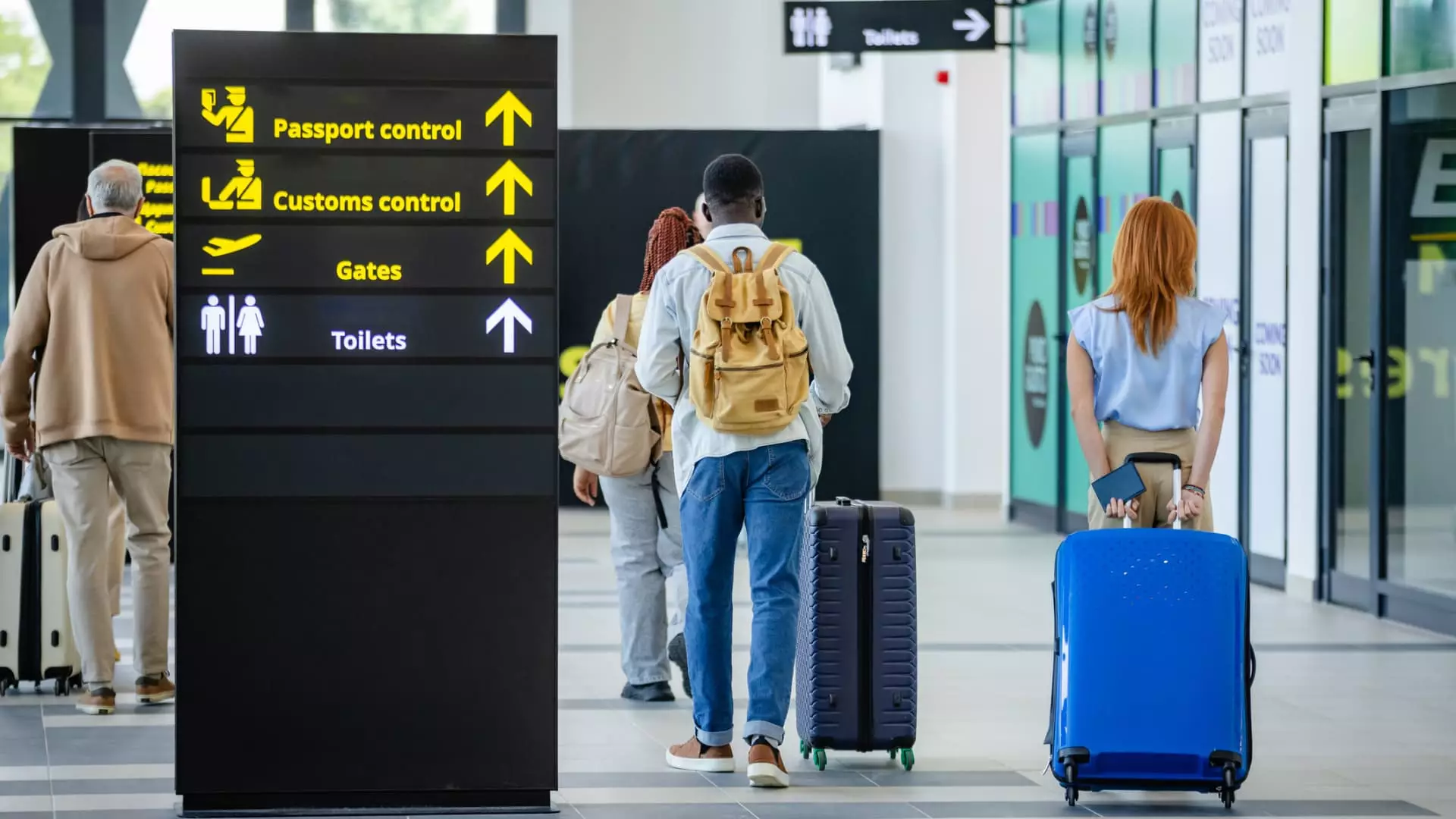The U.S. tourism industry is facing a critical moment, with projections indicating an $8.5 billion drop in spending from foreign visitors this year alone. According to insights from Oxford Economics, this decline is not merely a numerical statistic but a harbinger of more significant implications for the economy. The anticipated 5% reduction correlates with an approximately 9% fall in international arrivals, signaling that the U.S. is becoming a less appealing destination for global travelers. Such trends warrant a deep analysis of the factors influencing these diminishing numbers, as well as the broader impact on businesses that rely heavily on foreign tourism.
A Complex Nexus of Perceptions and Policies
The current downturn in tourism can be traced back to a complex web of perceptions influenced by domestic policies related to immigration and trade. Aran Ryan, an industry studies director at Tourism Economics, emphasizes the negative “sentiment-headwinds” stemming from the Trump administration’s approaches to border security and trade tariffs. International visitors are increasingly hesitant to visit a country perceived as unwelcoming or hostile. Flight booking statistics—that show an alarming 11% year-over-year decrease—highlight a fundamental shift where tourists are opting for destinations perceived as safer and more welcoming.
Countries like Canada and various European nations are vulnerable to U.S. policies, which potentially contribute to a broader decline in air traffic to America. The U.S. must strategize proactively to mitigate these perceptions and re-establish itself as a favorable destination, rather than allow these trends to spiral downward.
Financial Fallout and Economic Implications
The potential economic fallout from this decline is staggering, with estimates suggesting losses could rise to as much as $21 billion by 2025 if current trends persist. This situation could have far-reaching implications, affecting communities, local jobs, and businesses reliant on tourism revenue. The U.S. Travel Association has provided clarity on the gravity of the situation, indicating that even a 1% drop in international visitor spending equates to $1.8 billion in lost revenue annually.
The fear of economic repercussions should act as a catalyst for initiatives aimed at rebuilding trust and appeal among international tourists. Innovations in marketing, adjustments in travel policies, and outreach to international communities can foster a more welcoming environment.
The Dollar’s Influence: A Double-Edged Sword
The current strength of the U.S. dollar poses yet another barrier to foreign travelers. While a robust dollar can indicate economic stability, it concurrently makes it more expensive for tourists to partake in U.S. goods and services. In recent weeks, while the dollar has shown signs of weakening relative to some currencies, it remains relatively solid, causing many would-be travelers to reconsider their plans to visit America.
Additionally, concerns regarding the overall state of the global economy—compounded by protectionist trade policies and tariffs—heighten travel hesitancy. The fear of increased costs paired with a volatile economic landscape can render the U.S. a less attractive option for tourists scrutinizing their travel budgets.
Perception vs. Reality: Immigration Policies and Traveler Safety
Perhaps the most pressing issue in the discussion surrounding the decline in international tourists is the negative perception of U.S. immigration policies. As Geoff Freeman, CEO of the U.S. Travel Association, articulates, a perception is taking hold among international travelers that the U.S. immigration system is increasingly punitive. Concerns regarding searches at the border and the risk of deportation—especially for legal travelers—are creating a chilling effect that is driving potential visitors away.
This situation calls for a reevaluation of how policies are communicated. Engaging in diplomatic dialogues and promoting stories that highlight the diverse and welcoming spirit of America can counteract the alarming narratives that currently dominate international conversations about U.S. travel.
Charting the Path Forward
As the U.S. navigates this crisis, the path forward requires a multi-faceted approach. Policymakers, travel businesses, and communities must collaborate to enhance perceptions while providing tangible reassurances to foreign visitors. This might include addressing fears surrounding immigration, revisiting trade practices, and utilizing targeted marketing efforts that showcase the country’s diversity and cultural richness.
Adopting a proactive stance toward international tourism can transform a daunting forecast into an opportunity. To embrace change and adapt strategically will not only stem the tide of declining tourism but also rejuvenate the essence of America as a global travel hub. Through concerted efforts and a commitment to fostering welcoming experiences, we can revitalize a critical economic sector on which so many rely.

